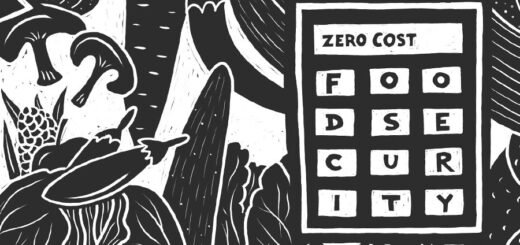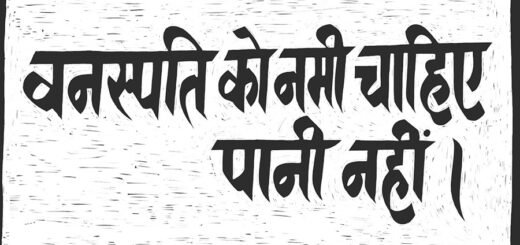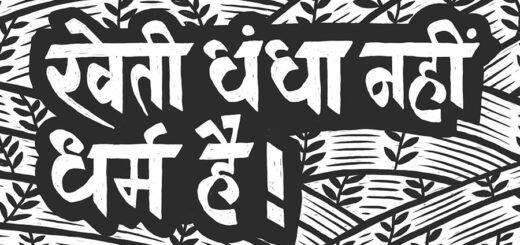Heading towards an agri-chaos
People have varied opinion about how the agriculture sector functions, or should function. There are highly politicized standpoints often fueled by myopic understanding of the middle class which believes the world thrives on it taxes.
It is well known fact that agri-sector is subsidized but what it not known so well is that India does not fare well on that account. Norway tops the agri-support chart with 57.6% support. This support is tabulated as monetary value of support to the sector with respect to the gross farm receipts /revenue. Norway is closely followed by Iceland at 54.6% and Switzerland at 47.4%. Japan stands at 41%, Indonesia at 23.3% and EU at 19%. In terms of total spend; China tops the chart with $185.9 billion support, which is 12.1% of its Gross Farm Revenue. (Source: OECD)
On the contrary, India stands at -4.97%, alongside very few other countries that do not positively support their agri-sector. And this, when India is a leading producer of milk, pulses, rice, wheat, etc. and almost 58% of its populace depends on agriculture as the primary source of livelihood. Technically, India is penalizing the sector rather than supporting it.

India fairs badly even in terms of producer protection. Producer protection is defined as the ratio between the average price received by producers and the border price (price at which goods are sold at international borders). India, at 0.867 is amongst the worst performing nations. What this means is that India offers 86.7% of the prevalent international rates to its growers. Iceland leads on this account at 1.817, Norway is at 1.767 and Switzerland at 1.410. USA stands at 1.032. (Source: OECD)
Instead of course correction, government is further lowering the subsidies thereby increasing the pressure on the growers. There are claims about market end ‘reforms’ and how free market policies will change the agri-landscape, ignoring the fact that even the freest nations are not that ‘free’ after all. At a policy level, there seems to distaste for solutions based on holistic approaches. Moreover, the decisions made by the government seem to be solely driven by political-business considerations.
The reason that this exploitation persists is possibly because most of the people engaged in farming are poor, and hence ‘can’ be exploited. Approximately 86% of Indian farmers have land holdings less than 2 hectares while almost 70% of rural households are engaged in farming. As they cannot meet their ends through farm incomes alone, a large number of them also work as manual labourers. It was many of them who walked hundreds of kilometres to reach their homes when the government announced a sudden lockdown due to Covid19.
While we have the luxury to call them farmers, technically they are manual labourers ‘working’ in their own land to ‘produce’ food at high risks. Farming for them is a thankless uneconomical activity which they are forced to undertake in the absence of alternate low-risk higher-income avenues.
Free market champions have a problem with statutory MSP (minimum support price). Report submitted by a high level committee on Restructuring of Food Corporation of India (FCI) states that only 6% of farmers avail the benefit of MSP. Some analysts feel that these figures could be faulty and claim that approximately 15 to 20% farmers may be availing the benefits of MSP. What most of the free market champions do not realize is that the free market will further exploit the poor and marginal farmers. The need of the hour is to actually extend the benefits to MSP to a larger number of growers, covering a wider range of produce, with an objective of ensure reasonable level of producer production.
We need to undertake these initiatives not only to support the growers and make farming viable but also ensure that food is accessible to all. The agri-sector is supported by governments across the board not without a reason. These subsidies, extended through reliefs in the costs of equipment, infrastructure, fertilizer, seed, credit, etc., are essential for controlling the food prices. Without these measures the food prices would break the ceiling, making food inaccessible to a majority of the population.
In most societies across the world, wealth is unequally distributed. A small majority controls majority of wealth. All the data points prove that majority of the world population is poor with almost 10% people living in extreme poverty. Poor people live without most of the things that an average middle class consumer takes for granted. They can survive with these extreme inequalities but cannot survive without air, water and food. To ensure that everyone has access to food, the price of food has to be somehow controlled. Like it or not, food is an essential commodity and a basic right. And it is the duty of the government as well as the society to ensure that no one dies of hunger.
There is another interesting way to understand the problem. Let us assume that your salary is ₹50,000. Which means your man-hour rate is ₹1000. Unlike a salaried person, in case of a farmer almost all the family members work in the fields. Apart from labour inputs, there is expenditure on seeds, fertilizers, crop protection, irrigation, machinery purchase or rental, cost of harvest and basic processing along with cost of packing and transporting the produce to the buyer. All of these consume significant amount of time and effort. If one was to look at the monetary returns with respect to the net man-hour expenditure, things simply do not match up. Working as daily wager under MNREGA, one of the lowest daily wage rates in India, would probably fetch better per hour rates.
I think the middle class often assumes that a farmer should work at the lowest man-hour rates possible. While people glorify farmers with nouns as ‘annadata’, the fact is that a farmer is regarded as an uneducated manual labourer. They are simply unwilling to see a farmer as a self-motivated entrepreneur engaged is a highly risky venture with low controls and no insurances whatsoever. An ill-timed rain or locust invasion can literally wipe off all the investments. While a mediocre investor demands very high returns for such risky propositions, we seem to make a privileged assumption that a farmer has chosen to absorb all these risks to ‘serve’ the world. Sadly, that is not true.
Instead of simplistically superimposing various economic models on the agri-sector, we need to really understanding the journey of food. On one hand we want everyone to have access to food, on the other hand we want the growers to be happy about doing what they are doing. We want their incomes to go up and the overall supply of food to increase. For anyone with a sane head, it is not hard to understand that this dynamics is not a simple demand & supply issue. In fact demand and supply theories seem to be anti-farmer! (This topic has been discussed in the article titled – Is the law of supply and demand essentially anti-farmer?)
In the Indian context, a viable farming sector is needed not only to ensure steady supply of food at reasonable price but to also ensure employment. If the sector does not start providing better results, this already undesirable profession will one day collapse. What this means is that majority of rural population (over 65% of India) would be looking for alternate avenues of livelihood, which the country is not in a position to provide. With the current thinking process of the government and its think-tanks, I think we are heading towards an agri-chaos that would eventually manifest as economic, political and human crisis of unmanageable scale. I hope we wake up before D-day!















How to address this dichotomy? How to get more of educated professionals enter farming?
for that farming has to be viable 🙂
It always was and is. Disband the fiat money system and increase liability of limited liability corporation and all will be well. The salaried people working people working for legal fictions doing imaginary work will need support
Agriculture is Noble profession…but from ancient times..it had never thought doing it commercial way…integrating…other Allied things into it…so still it is at subsistence level only…unfortunately it is only thing in world…where produce prices are not determined by producers…and all game of demand and supply…which is controlled by non farmers…young intellectuals have to enter specially at trade level…to make it viable…
Very well put. If you notice all those supposedly serving the farmers are rich, be it crop insurer or the fertilizer company and the farmers still remain poor and will become poorer. The income of average income of middle class has jumped over 4-5 times in last 20 years but the prices of farm produce remains even less. The incentives for farmers to keep cultivating are dwindling down. Food chaos is imminent.